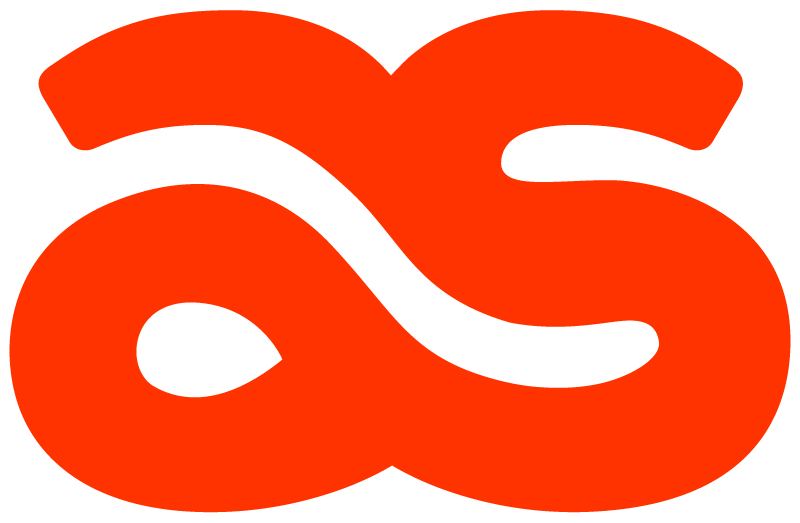Instagram Algorithm: How to Get Your Content Seen
Social media marketing in general is anything but simple. Instagram is one of the biggest ways to creatively market a business. Here at Aerial State, a hub like Instagram is an incredible way to share photos and videos for potential clients to be fully immersed in what we are all about. But Instagram has become far more complex than quickly grabbing your latest photo, adding a few hashtags, and posting at any hour of the day. You could be working on the perfect post all morning but the work isn’t done right there. If you want your content to actually get in front of a wide audience, you’re going to need to appease the all-mighty (and ever-changing) Instagram algorithm.
Understanding the 2022 Instagram algorithm and what it deems important is critical to a successful social media marketing strategy. We wanted to learn more about the ins and outs of the algorithm’s ranking signals, important recent changes to the Instagram algorithm, and everything else businesses need to know to boost one’s content visibility on the platform. To begin, what does the Instagram algorithm mean?
What is the Instagram algorithm?
The Instagram algorithm is a set of rules that rank content on the platform. It decides what content shows up, and in what order, on all Instagram users’ feeds, the Explore Page, the Reels feed, hashtag pages, etc.
The Instagram algorithm analyzes every piece of content posted to the platform. It takes metadata (including captions and alt text applied to images), hashtags, and engagement metrics into account. Based on this information, it distributes content in a way designed to ensure that users have easy access to what they are most interested in seeing.
In simple terms, the Instagram algorithm cross-references information about content (posts, Stories, Reels) with information about users (interests and behavior on the platform) to serve the right content to the right people.
The main purpose of the Instagram algorithm is to make each user’s experience with the platform as pleasant as possible. “We want to make the most of your time, and we believe that using technology [the Instagram algorithm] to personalize your experience is the best way to do that,” wrote Instagram CEO Adam Mosseri in 2021 in a blog post entitled Shedding More Light on How Instagram Works.
Why does this matter to marketers? Knowing how the Instagram algorithm works and optimizing your content accordingly can lead to Instagram displaying your posts to more users.
How does the Instagram algorithm work?
Each time a user opens the app, the Instagram algorithms instantly comb through all available content and decide what content to serve them (and in what order).
The 3 most important ranking factors of the 2022 Instagram algorithm are:
- Relationship between the author of the content and the viewer. Do you follow each other? Do you message each other, or leave comments? If you have repeatedly interacted with a specific user in the past, you are more likely to see the new content they post. (This is very important for businesses: Active community management (including responding to DMs and comments) can improve a brand’s visibility on Instagram.)
- Interest. Does a user typically interact with this type of content? When the Instagram algorithm recognizes that a user enjoys a specific content type or format, they serve them more of the same.
- Relevancy. Instagram decides how “relevant” every piece of content is. This includes an analysis of where it fits with trending topics as well as the timeliness factor (recent posts are considered more relevant than old ones).
Secondary Instagram algorithm ranking factors include:
- Frequency of using the platform. If a user doesn’t open Instagram very often, they will only see the very most relevant content when they do decide to browse the app. This means that businesses might be crowded out of such a user’s feed by family and friends.
- How many users a person follows. The more accounts a user follows, the more accounts compete for space in their feed.
- Session time. If a user spends very little time in the app, they are likely to only see posts from friends and family they interact with most often on the platform, making it more difficult for businesses to surface in their feed.
Beyond these core signals, here’s how the Instagram algorithm distributes specific content formats.
The 2022 Instagram algorithm for the feed and Stories
For your Feed and Stories, the Instagram algorithm sorts through the content of the accounts you follow and predicts how likely you are to interact with a post based on the following criteria:
- Information about the post. How many likes did a post get? When was it posted? Has it been tagged with a location? If it’s a video, how long is it? These signals help the Instagram algorithm determine the relevance and popularity of a post.
- Information about the person who posted, and your history of interaction with them. Instagram tracks how many times you’ve interacted with any given person (with comments, likes, profile views, and so on) to try to get a sense of how interesting a person might be to you.
- Your activity across the platform. The quantity and content of posts you’ve interacted with gives Instagram a clue as to what kind of other posts you might be interested in seeing.
The 2022 Instagram algorithm for the Explore tab
For the Explore tab, the algorithm looks at previous posts that you’ve liked or interacted with, and pulls in a collection of photos and videos from related accounts that you don’t follow (yet!).
These photos and videos are then ranked by what the algorithm thinks you’ll be most interested in, based on how likely you are to like, save or share a post.
- Information about the post. When curating content to share via the Explore tab, Instagram looks at the overall popularity of a post, using signals like how many people are liking, commenting, sharing, and saving, and how quickly these activities happen.
- Your history of interacting with the person who posted. Most of the content on Explore will be from new-to-you accounts, but accounts you have interacted with get a bit of a boost here.
- Your activity. What posts have you liked, commented on, or saved in the past? How have you behaved on the Explore page previously? Your activity history impacts what Instagram assumes you might be interested in seeing more of.
- Information about the person who posted. If an account has lots of interaction with users in the past few weeks, it’s a signal to Instagram that there’s some compelling content going on that others might like, too.
The 2022 Instagram algorithm for Reels
With Reels, the algorithm pulls from both accounts you follow and accounts you don’t follow, trying to entertain you with content it thinks you’ll watch all the way through.
It evaluates this by looking at the following:
- Your activity. Signals like which Reels you’ve liked, which you’ve commented on, and which you’ve engaged with all help Instagram understand what kind of content could be the most relevant to your interests.
- Your history of interacting with the person who posted. With Reels (much like Explore), you’re likely to be served up videos from creators you haven’t heard of… but if you have interacted with them in some way previously, Instagram takes that into consideration too. That’s probably why you see lots of content from creators you know of, but haven’t pulled the trigger on following yet.
- Information about the Reel. The Instagram algorithm tries to guess what the video is about based on the audio track and analysis of the pixels and frames, and takes into account the video’s popularity, too.
- Information about the person who posted. Is the original poster someone with an engaged audience, or whose content receives consistent likes and shares? Instagram takes this into account too.
If you’re more of a visual learner, check out this video from Hootsuite Labs explaining the Instagram algorithm for beginners.



